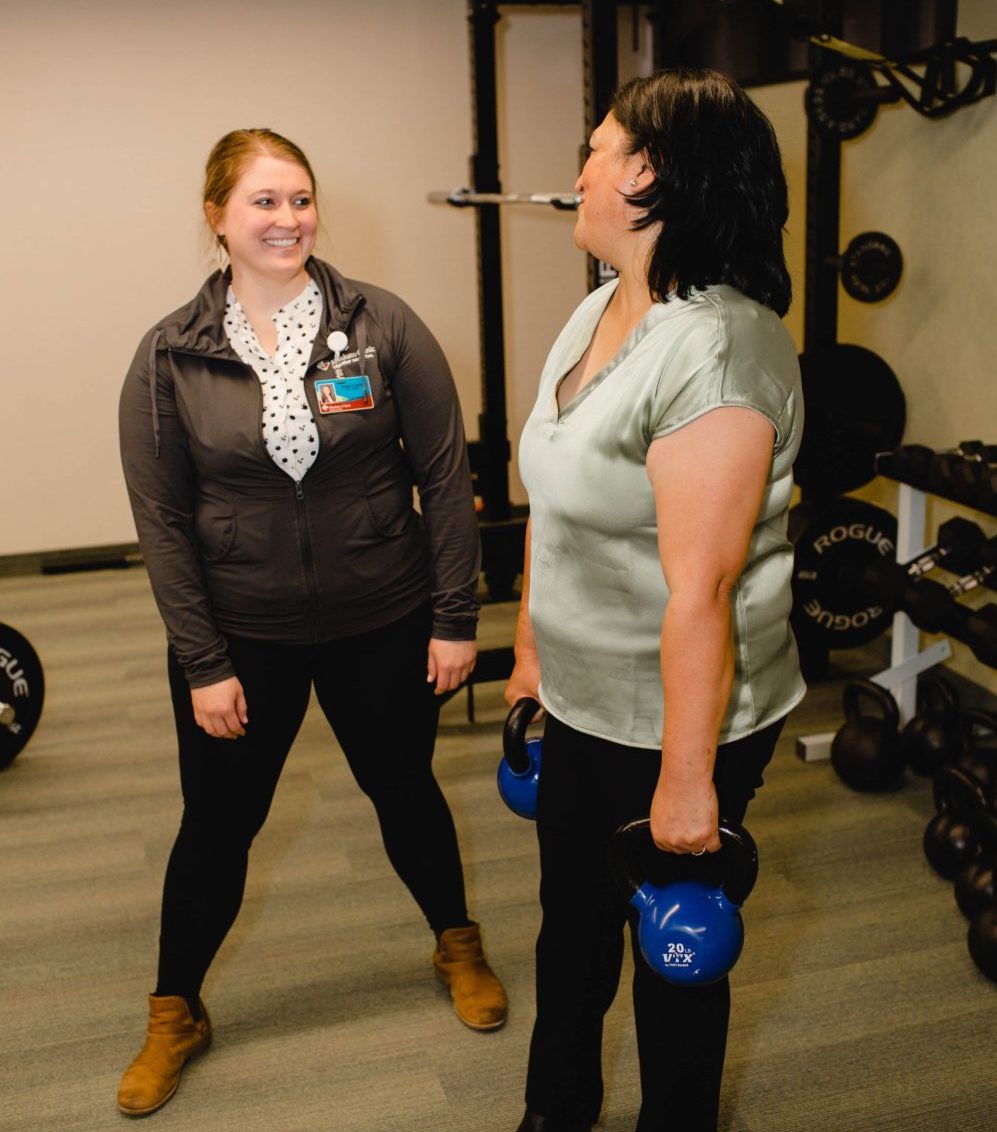
Every part of her body hurt. When people touched her, she bruised. She didn’t want to get out of bed, didn’t want to go on living.
While Maria Mendez De Balcazar, who goes by Carmen, was learning to manage diabetes, she was diagnosed with fibromyalgia. This is a chronic condition affecting almost 5 million people in the U.S., mostly women. Fibromyalgia causes widespread pain, sleep problems, fatigue, and often emotional and mental distress. These symptoms also impacted Carmen’s ability to manage diabetes because sleep, mental health and physical activity affect blood sugar levels.
She had to quit her job at the bakery where she was on her feet for 8-10 hour shifts, pulling large pans in and out of ovens.
Carmen began physical therapy with Jessica Denn, PT, DPT, who explained how the brain and nervous system work together. People with fibromyalgia feel a heightened sensitivity to pain; brain scans show changes in neural pathways that transmit and receive pain. Jessica used pain neuroscience education (PNE) to teach Carmen about the complexities of her pain. Treatment included educational pain analogies, re-education of pain, exercise, and lifestyle and movement modifications.

Jessica Denn, PT, DPT, works on kettle bell swings with Carmen.
“A sensitive nervous system is like an alarm system in your home. Typically, the alarm only goes off when someone breaks in, but if the alarm system is extra sensitive, it can go off when a tree branch scrapes against the window. This is why they are experiencing flare-ups of pain. ” Jessica says.
Calming techniques can lower the sensitivity of the nervous system, relax the body, decrease anxiety and prevent flare-ups. Jessica showed Carmen relaxation and breathing techniques to use when she feels anxious, stressed or pain coming on.
Getting good sleep is very helpful. Jessica advises sticking to a bedtime routine every night to relax the body, calm the nervous system and tell the mind it’s time to sleep. People sleep better when they have a fixed sleep and wake time, limit naps, unplug from electronics like the TV and phone for 30-60 minutes before bed, have a dark and cool room for sleep, and stick to a consistent routine at night when putting on pajamas and brushing teeth.
According to Choose PT, regular, moderate exercise is an important part of managing fibromyalgia. Research shows that movement like walking, stretching, strength training, yoga and deep breathing can decrease pain and improve function, general health, and sleep in people with fibromyalgia.
To start, Carmen’s goal was 5 minutes of walking a day. She learned that hurt is not harm, sore is safe, and tissues heal.
Jessica advises patients to set little goals and gradually do more activities each day. She suggests doing one load of laundry a day instead of all the laundry in one day.
In November, Carmen’s goal was to get back to her job within a year. “I may still have some aches and pains but I can work,” she says.
She had been taking care of her baby nephew every day. He was good medicine for mind, body and soul. “He smiles and snuggles and brings me so much joy!”
So to return to her job, Jessica helped Carmen set mini-goals. Carmen tracked her progress in reaching her goal of two hours of walking a day. In her kitchen, her happy place, Carmen’s goal was to stand for a half hour and increase to 45 minutes by cooking and cleaning.
With physical therapy and perseverance, Carmen returned to work part-time in February. She reached her goal in three months, well ahead of schedule.
“Everything just clicked into place. …What I lived through was really horrible. But I’m here now,” Carmen says.
“Doing kettlebell swings,” Jessica adds.
She continues to work with Jessica to manage symptoms, gain strength and endurance, and improve confidence in her abilities.
“I am very thankful to all of my providers because thanks to them I’m here today. I can’t stop saying that God has sent me a group of angels here on earth. Gracias,” Carmen says.